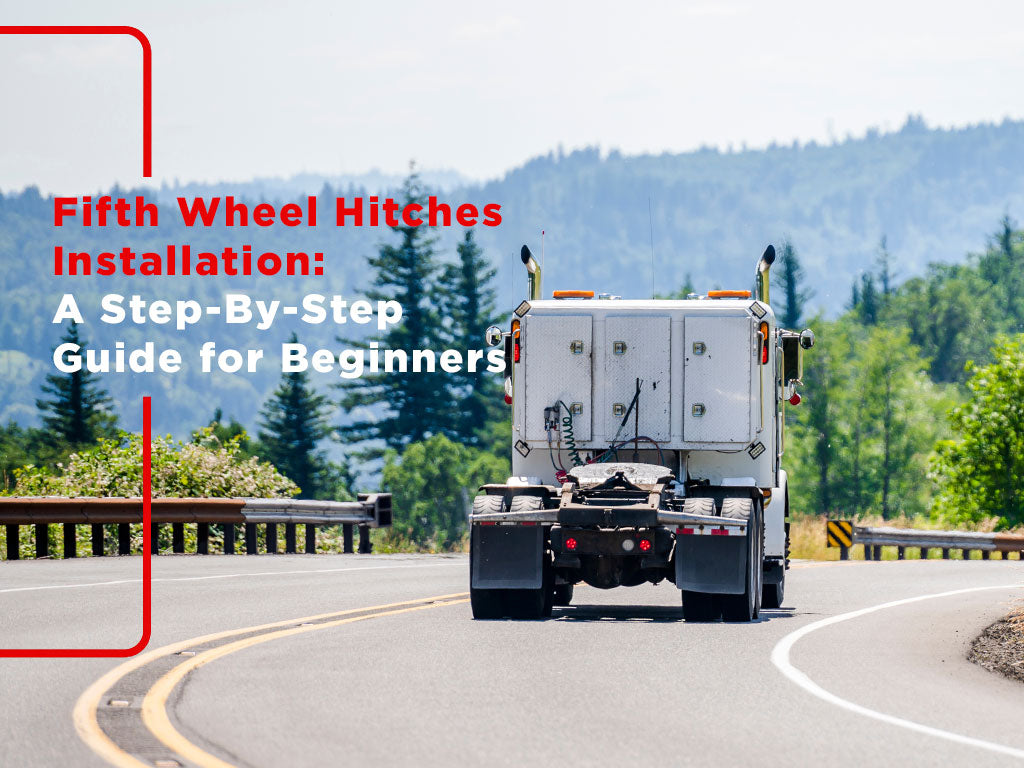Call (888) 611 2366
Support@tulgafifthwheel.com
Call (888) 611 2366
Support@tulgafifthwheel.com


If you're new to the world of RVing and towing, installing a fifth-wheel hitch may seem like a daunting task. However, with the right guidance and a bit of patience, it's a manageable DIY project. In this step-by-step guide, we'll walk you through the process of installing a fifth-wheel hitch, designed especially for beginners.

Before you begin, ensure you have all the necessary tools and materials at hand. You'll typically need:
Fifth Wheel Hitch Kit: Start by unpacking your fifth-wheel hitch kit, which typically includes the hitch head, mounting brackets, and all necessary hardware.
Wrenches and Socket Set: You'll need these for tightening bolts and nuts during the installation.
Torque Wrench: This tool is crucial for ensuring that all the bolts are tightened to the recommended torque specifications, which is vital for a secure installation.
Drill and Drill Bits: You'll need a drill and the appropriate drill bits for creating holes in your truck bed for the mounting brackets.
Tape Measure: Precision is key in this process, so a tape measure is essential for accurate measurements.
Safety Glasses: Safety first! Protect your eyes with safety glasses while drilling and working with tools.
Level: A level will help you ensure that the hitch and mounting brackets are installed properly and horizontally.
Work Gloves: It's always a good idea to wear work gloves to protect your hands during the installation process.

Selecting the proper location for your 5th-wheel truck hitch is crucial. The hitch should be installed in the bed of your truck, preferably over or slightly ahead of the rear axle. Be sure to consult your truck's owner's manual for any manufacturer-specific recommendations.

When it comes to installing a fifth wheel hitch, precision is key, and that's where the step of "Measure and Mark" becomes pivotal. Before drilling holes for the mounting brackets, take the time to carefully measure and mark the precise locations in your truck bed where the hitch will be installed. Using a tape measure and a discerning eye, ensure that the hitch's placement is centered and aligned correctly. These markings serve as your guideposts, helping you guarantee that the hitch is positioned optimally for stability and safe towing.
Drilling into your truck bed may sound intimidating, but it's a necessary step for a secure installation. Follow these steps:
The hitch head is the part that connects to the kingpin of your fifth-wheel trailer. Assemble it according to the manufacturer's instructions, ensuring all bolts are tightened to the recommended torque specifications.
Carefully place the hitch head onto the mounting brackets in your truck bed. Make sure it's aligned with the kingpin on your trailer.
Use a torque wrench to tighten the bolts that hold the hitch head to the mounting brackets. It's crucial to follow the manufacturer's torque specifications to ensure a safe and secure connection.
Before hitting the road, test the fit by lowering your fifth-wheel trailer onto the hitch. Ensure that the kingpin securely locks into the hitch head and that there is no excessive play or movement.

Attach safety chains from the trailer to the appropriate points on your truck. Additionally, connect the electrical wiring to ensure proper communication between your truck and the trailer's lights and brakes.
Before you head out on your adventure, take a few extra minutes to double-check all the bolts, nuts, and connections. Ensure that everything is tight and secure. A second set of eyes can be helpful in this regard.
If you're new to towing a fifth wheel, practice driving and maneuvering in an open and safe area before hitting the open road. Get a feel for how your truck and trailer handle together.

Installing a fifth-wheel hitch may seem daunting at first, but with the right tools, materials, and step-by-step guidance, beginners can successfully complete the installation. Just remember to follow the manufacturer's instructions carefully and prioritize safety throughout the process.
By following these steps, you can confidently install your fifth-wheel hitch and embark on your RV adventures with the peace of mind that comes from knowing your hitch is securely in place. Remember, practice makes perfect, so take your time, and you'll soon be a pro at towing your fifth-wheel trailer.
Leave a comment